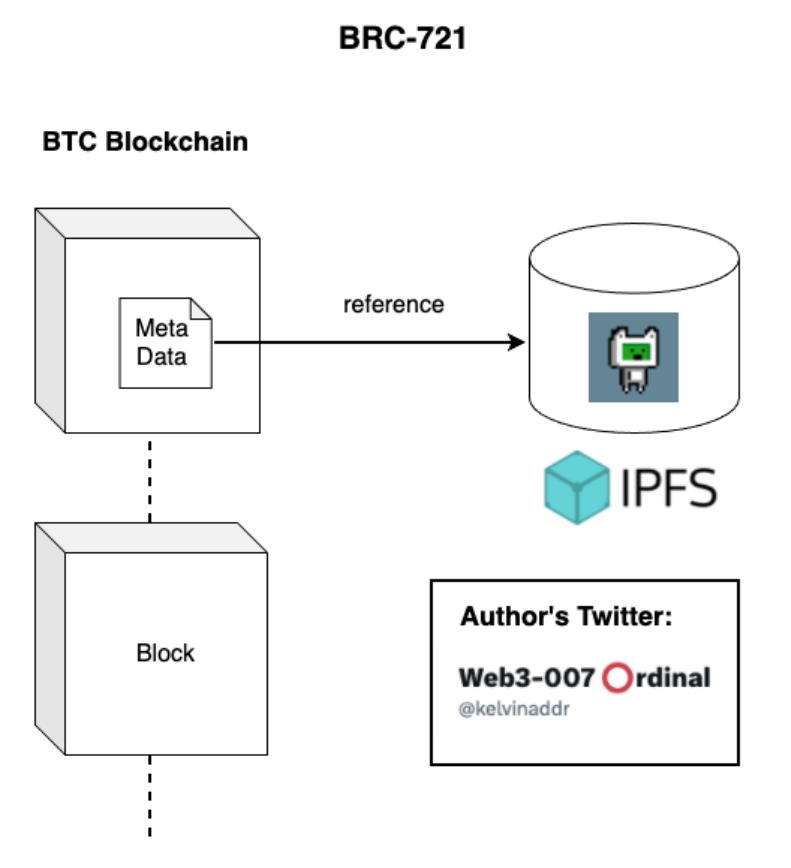Recently, the orange icon representing the BRC 721 standard has appeared a lot on social networking platforms. Twitter. The BRC 721 standard is being talked about as the first standard for NFTs on Bitcoin. The emergence of BRC 721 gives everyone the opportunity to discover more about the diversity and value of Bitcoin. So what is the BRC 721 standard? Let’s find out with the Weakhand team in this article.
What is BRC 721?
Introduction to BRC 721
BRC 721 is an experimental standard for issuing NFTs on the Bitcoin network that builds on the ideas and principles of BRC 20 with the aim of bringing functionality for NFTs across the Bitcoin ecosystem.
Using the BRC 721 standard allows users to easily create, mint, transfer and update digital assets for a variety of applications including: Digital art, collectibles, etc.

What is BRC 721?
Who created BRC 721?
Currently, Bitcoin Ordinals lacks a standardized method to give Ordinals NFTs the same flexibility and functionality that NFTs on Ethereum have.
To solve this problem, developer Poyo proposed a new standard for NFTs on Bitcoin called BRC 721 on April 9, 2023. Poyo envisions BRC 721 as a standard that helps marketplaces instantly identify collections and metadata carried directly on-chain.
How Does BRC 721 Work?
With a regular Bitcoin Ordinals it is necessary to save an image for each Inscription, which leads to high mint fees and takes up a lot of space in the Bitcoin network. With BRC 721, images are stored off-chain through the IPFS service, other information such as: Image address and some deployment information will be stored on-chain, this will greatly improve mint fees and reduce Bitcoin cyberspace.

NFT data applying the BRC 721 standard is partially stored off-chain
Another special feature of BRC 721 is that it applies the same protocol format as BRC 20 and defines various functions through JSON content. This helps NFTs on Bitcoin to achieve more complex functions, bring external resources into Ordinals, be scalable and interoperable with many layers of applications and dApps.
Advantages and Disadvantages of BRC 721
Main advantages of BRC 721
- Decentralized and trustless: BRC 721 eliminates the dependency on centralized services or wallets which leads to a more secure and robust ecosystem.
- BRC 721 simplifies the collection creation and verification process by providing a single source of truth.
- BRC 721 uses URI and Metadata inspired by the ERC 721 standard on the Ethereum blockchain, which has proven effective and is widely used on Ethereum.
Disadvantages of BRC 721
- The BRC 721 standard has only been released for a while and has not yet been reviewed by the community, so there may be some errors in its implementation.
Difference Between BRC 721 And BRC 20
Because BRC 721 applies the same protocol format as BRC 20 but there are differences between them as follows:
- Intended use: BRC 20 is designed for use with Fungible Tokens while BRC 721 is intended for use with NFTs.
- BRC 20 requires minting an Inscription before transferring which is necessary but it leads to high transaction costs and increases invalid data on the Bitcoin network. Meanwhile, BRC 721 takes advantage of the ordinals inscription feature and can complete transactions directly, significantly reducing costs and reducing invalid data on the network.
summary
BRC 721 is an experimental standard for NFTs on Ethereum. This standard facilitates the management of None Fungible Tokens (NFTs). There are still many challenges for Bitcoin NFTs to achieve mass adoption like NFTs on Ethereum. However, the NFT market outlook on BTC remains attractive with the introduction of BRC 721 bringing more flexibility and scalability to NFTs on BTC. Above is all the information I want to provide to everyone about BRC 721. I hope everyone has received useful knowledge.


